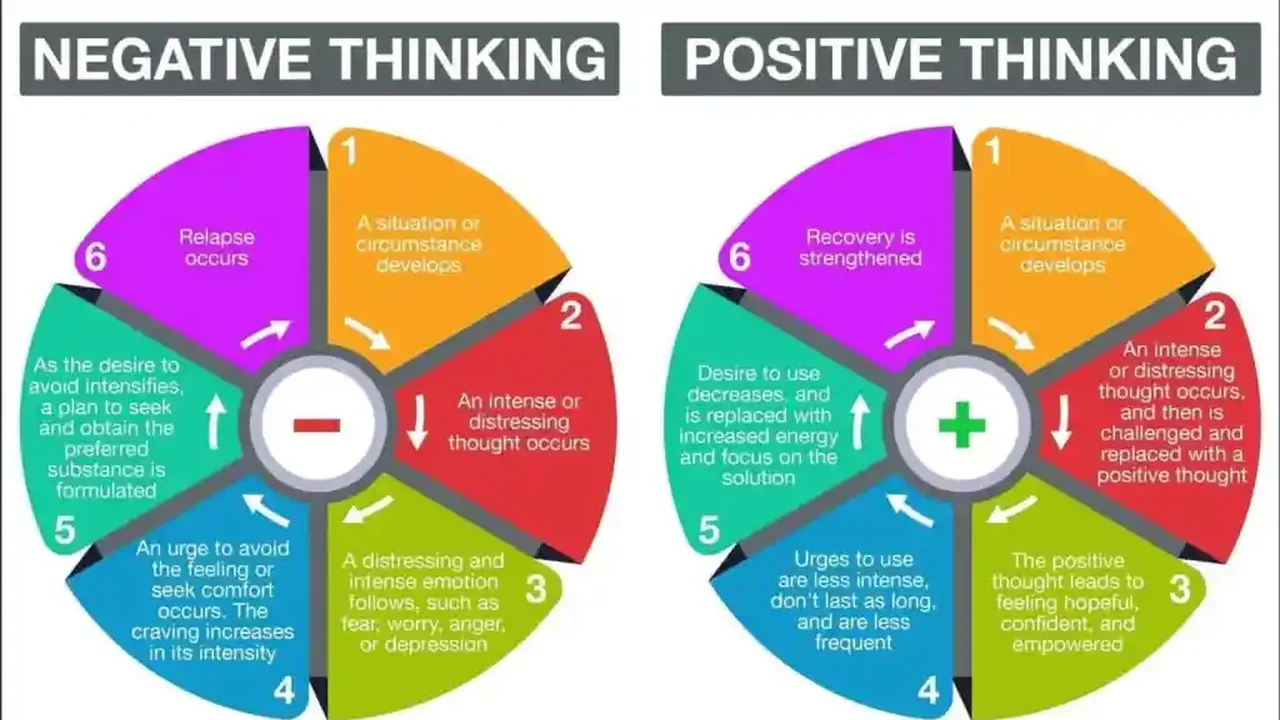Preventing Exercise Injuries: Tips for a Safe Workout
Learn how to create a sustainable lifestyle and adopt eco-friendly practices. This guide covers essential tips for reducing your environmental impact. Contribute to a healthier planet and improve your well-being with sustainable living.

Understanding Sustainable Living and Eco-Friendly Practices
So, you're thinking about living more sustainably? That's awesome! Sustainable living is all about making choices that minimize our impact on the environment. It's about meeting our current needs without compromising the ability of future generations to meet theirs. Eco-friendly practices are the specific actions we take to achieve this sustainability. It might sound daunting, but trust me, it's totally achievable and can even be fun!
Think of it this way: every little bit helps. From reducing your carbon footprint to conserving water and energy, every conscious decision contributes to a healthier planet. It's not about being perfect; it's about making progress.
Reducing Your Carbon Footprint: Key Strategies for Environmental Impact Reduction
Your carbon footprint is the total amount of greenhouse gases you generate, directly and indirectly. Transportation, energy consumption, and even the food we eat contribute to it. Reducing it is a crucial step towards sustainable living.
- Transportation: This is a big one. Consider walking, biking, or using public transportation whenever possible. Carpooling is another great option. If you need a car, think about switching to an electric or hybrid vehicle. Even small changes like properly inflating your tires can improve fuel efficiency.
- Energy Consumption: Be mindful of your energy usage at home. Switch to energy-efficient appliances (look for the Energy Star label!). Unplug electronics when you're not using them, as they can still draw power. Consider installing solar panels to generate your own electricity.
- Diet: What we eat has a significant impact. Reducing your meat consumption, especially beef, is a powerful way to shrink your carbon footprint. Choose locally sourced and seasonal produce whenever possible to minimize transportation emissions. Consider growing your own herbs and vegetables.
Think about your daily routines. Where can you make small changes that add up over time? Maybe it's taking shorter showers, turning off lights when you leave a room, or opting for reusable shopping bags. Every conscious choice makes a difference.
Conserving Water: Practical Tips for Water Conservation at Home
Water is a precious resource, and conserving it is essential for sustainable living. Here are some practical tips you can implement at home:
- Fix Leaks: Even small leaks can waste gallons of water over time. Regularly check your faucets, toilets, and pipes for leaks and fix them promptly.
- Water-Efficient Appliances: When replacing appliances, choose water-efficient models. Look for low-flow showerheads, toilets, and washing machines.
- Be Mindful of Shower Time: Shorten your showers and turn off the water while you're soaping up or shampooing.
- Outdoor Watering: Water your lawn and garden during the cooler parts of the day to minimize evaporation. Consider using a rain barrel to collect rainwater for watering.
Think about ways to reuse water. Can you use the water from washing vegetables to water your plants? Can you capture the water that runs while you're waiting for the shower to warm up? Get creative!
Reducing Waste: Strategies for Waste Reduction, Recycling, and Composting
Waste reduction is a key component of sustainable living. The goal is to minimize the amount of trash we send to landfills.
- Reduce: The first step is to reduce the amount of waste you generate in the first place. Avoid single-use plastics, choose products with minimal packaging, and buy in bulk whenever possible.
- Reuse: Find new uses for old items instead of throwing them away. Repurpose glass jars, plastic containers, and even old clothing.
- Recycle: Make sure you're recycling properly. Familiarize yourself with your local recycling guidelines and sort your recyclables accordingly.
- Compost: Composting is a fantastic way to reduce food waste. You can compost food scraps, yard waste, and even paper products. The resulting compost can be used to enrich your garden soil.
Think about the products you buy. Can you choose products made from recycled materials? Can you support companies that prioritize sustainability? Your purchasing decisions can make a big impact.
Eco-Friendly Product Recommendations: Sustainable Choices for Your Home and Life
Choosing eco-friendly products is a great way to support sustainable businesses and reduce your environmental impact. Here are a few recommendations:
- Reusable Water Bottles: A must-have for anyone trying to reduce plastic waste.
- Product Recommendation: Hydro Flask Stainless Steel Water Bottle. This bottle is durable, insulated, and comes in a variety of sizes and colors.
- Use Case: Perfect for everyday use, at the gym, or on hikes.
- Comparison: Compared to plastic water bottles, reusable bottles are significantly better for the environment. Compared to other reusable bottles, Hydro Flask is known for its excellent insulation, keeping drinks cold for up to 24 hours and hot for up to 12 hours. Cheaper alternatives might not have the same insulation capabilities.
- Price: Around $30-$50.
- Reusable Shopping Bags: Ditch the plastic bags and bring your own reusable bags to the grocery store.
- Product Recommendation: Baggu Standard Reusable Shopping Bag. These bags are lightweight, durable, and come in a variety of fun prints.
- Use Case: Ideal for grocery shopping, farmers markets, or carrying everyday items.
- Comparison: Compared to plastic bags, reusable bags are much more sustainable. Compared to other reusable bags, Baggu bags are known for their durability and stylish designs. Some cheaper alternatives might not be as strong or long-lasting.
- Price: Around $12-$15.
- Bamboo Toothbrushes: A sustainable alternative to plastic toothbrushes.
- Product Recommendation: Brush with Bamboo Toothbrush. These toothbrushes have a biodegradable bamboo handle and soft bristles.
- Use Case: Used just like a regular toothbrush, but with a much smaller environmental impact.
- Comparison: Compared to plastic toothbrushes, bamboo toothbrushes are a much more sustainable choice, as the handle is biodegradable. Cheaper alternatives might not have the same quality bristles.
- Price: Around $5-$8.
- Solid Shampoo and Conditioner Bars: Reduce plastic waste in your bathroom with solid shampoo and conditioner bars.
- Product Recommendation: Ethique Shampoo and Conditioner Bars. These bars are plastic-free, cruelty-free, and come in a variety of formulas for different hair types.
- Use Case: Used just like liquid shampoo and conditioner, but without the plastic bottle.
- Comparison: Compared to liquid shampoo and conditioner, solid bars are much more eco-friendly. Ethique bars are known for their high-quality ingredients and effectiveness. Some cheaper alternatives might not have the same lather or cleansing power.
- Price: Around $15-$20 per bar.
- Beeswax Food Wraps: A reusable alternative to plastic wrap.
- Product Recommendation: Bee's Wrap Reusable Beeswax Food Wraps. These wraps are made from organic cotton, beeswax, jojoba oil, and tree resin.
- Use Case: Used to wrap fruits, vegetables, sandwiches, and other food items.
- Comparison: Compared to plastic wrap, beeswax wraps are a much more sustainable and reusable option. They're also breathable, which helps keep food fresh longer. Cheaper alternatives might not be as durable or effective at sealing.
- Price: Around $18-$25 for a set of three.
- Laundry Detergent Sheets: A plastic-free alternative to traditional laundry detergent.
- Product Recommendation: Earth Breeze Laundry Detergent Eco Sheets. These sheets are biodegradable, hypoallergenic, and effective at cleaning clothes.
- Use Case: Simply toss a sheet into your washing machine with your clothes.
- Comparison: Compared to liquid laundry detergent, sheets eliminate the need for plastic bottles and are easier to transport. Some cheaper alternatives might not clean as effectively.
- Price: Around $20 for a pack of 60 sheets.
- Reusable Produce Bags: Another great way to reduce plastic waste at the grocery store.
- Product Recommendation: Organic Cotton Mart Reusable Produce Bags. These bags are made from organic cotton and are durable enough to hold a variety of produce items.
- Use Case: Use them to bag fruits, vegetables, and other loose items at the grocery store.
- Comparison: Compared to plastic produce bags, reusable bags are a much more sustainable choice. Organic cotton bags are a good option because they are made from natural materials.
- Price: Around $15 for a set of 9 bags.
Embracing Sustainable Consumption: Making Conscious Purchasing Decisions
Sustainable consumption is about being mindful of the products you buy and the impact they have on the environment. Here are some things to consider:
- Choose Products with Minimal Packaging: Opt for products with less packaging or packaging made from recycled materials.
- Support Local Businesses: Buying from local businesses reduces transportation emissions and supports your community.
- Buy Secondhand: Give old items a new life by buying secondhand clothing, furniture, and other goods.
- Repair Instead of Replacing: When something breaks, try to repair it instead of automatically buying a new one.
- Consider the Product's Lifecycle: Think about the entire lifecycle of a product, from its raw materials to its disposal, and choose products that are made sustainably.
Ask yourself, "Do I really need this?" Before making a purchase, consider whether you truly need the item or if there's a more sustainable alternative.
Sustainable Living in Your Community: Engaging in Local Environmental Initiatives
Sustainable living isn't just about individual actions; it's also about engaging with your community to create positive change. Here are some ways to get involved:
- Volunteer: Volunteer for local environmental organizations or participate in community cleanups.
- Advocate: Contact your elected officials and advocate for policies that support sustainability.
- Educate Others: Share your knowledge and passion for sustainability with your friends, family, and neighbors.
- Support Local Farmers Markets: Buy locally grown produce and support sustainable agriculture.
- Join a Community Garden: Grow your own food and connect with other gardeners.
Look for opportunities to collaborate with others in your community to create a more sustainable future.
The Benefits of Eco-Friendly Living: Improving Your Health and Well-being
Living sustainably isn't just good for the planet; it's also good for your health and well-being. Here are some benefits:
- Improved Air and Water Quality: Reducing pollution improves air and water quality, which can benefit your respiratory health and overall well-being.
- Healthier Food Choices: Eating locally sourced and seasonal produce encourages healthier eating habits.
- Reduced Stress: Spending time in nature and engaging in sustainable activities can reduce stress and improve your mood.
- Increased Physical Activity: Walking, biking, and gardening are all sustainable activities that can increase your physical activity levels.
- Sense of Purpose: Knowing that you're making a positive impact on the planet can give you a sense of purpose and fulfillment.
Living sustainably can lead to a healthier, happier, and more fulfilling life.
Overcoming Challenges to Sustainable Living: Practical Solutions for Common Obstacles
Sustainable living can sometimes feel challenging, but with a little planning and creativity, you can overcome common obstacles.
- Cost: Some eco-friendly products can be more expensive than conventional products. Look for sales, buy in bulk, and prioritize essential items.
- Convenience: Sustainable choices may require a little more effort. Plan ahead, prepare meals at home, and bring your own reusable bags and containers.
- Information Overload: There's a lot of information out there about sustainability. Start small, focus on one area at a time, and do your research.
- Lack of Support: Not everyone will understand or support your sustainable choices. Find like-minded people and build a support network.
Remember, every little bit helps. Don't get discouraged if you can't be perfect. Just keep making progress and doing what you can.
Continuous Learning and Improvement: Staying Updated on Sustainable Practices and Innovations
The world of sustainability is constantly evolving, with new practices and innovations emerging all the time. Stay updated by:
- Reading Books and Articles: There are countless books and articles on sustainable living.
- Following Blogs and Social Media Accounts: Stay informed by following blogs and social media accounts that focus on sustainability.
- Attending Workshops and Conferences: Attend workshops and conferences to learn from experts and connect with other enthusiasts.
- Experimenting with New Ideas: Don't be afraid to try new things and see what works for you.
Sustainable living is a journey, not a destination. Keep learning, keep experimenting, and keep making progress.
:max_bytes(150000):strip_icc()/277019-baked-pork-chops-with-cream-of-mushroom-soup-DDMFS-beauty-4x3-BG-7505-5762b731cf30447d9cbbbbbf387beafa.jpg)






